If there was a candidate for scum of the earth nation Belgium could well beat Switzerland for the title, apart from the gutless cowardly performance by their army in ww2 heres the low down on their colonial experience.Until the latter part of the 19th century, the Europeans had not yet ventured into the Congo. The rainforest , swamps and malaria,
, swamps and malaria, and other diseases such as sleeping sickness made it a difficult
and other diseases such as sleeping sickness made it a difficult  environment for European exploration and exploitation. In 1876,King Léopold II of the Belgians
environment for European exploration and exploitation. In 1876,King Léopold II of the Belgians 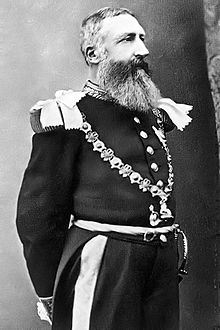 organized the International African Association with the cooperation of the leading African explorers
organized the International African Association with the cooperation of the leading African explorers  and the support of several European governments for the promotion of African exploration and colonization. After Henry Morton Stanley explored the region,
and the support of several European governments for the promotion of African exploration and colonization. After Henry Morton Stanley explored the region,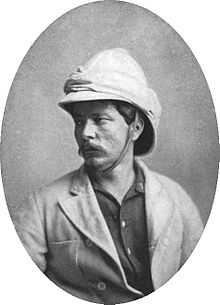 a journey that ended in 1878, Leopold courted the explorer and hired him to help establish Leopold's interests in the region. Léopold II had been keen to acquire a colony for Belgium even before he ascended to the throne in 1865.
a journey that ended in 1878, Leopold courted the explorer and hired him to help establish Leopold's interests in the region. Léopold II had been keen to acquire a colony for Belgium even before he ascended to the throne in 1865.  He was convinced that the acquisition of a colony would bestow international prestige on his relatively young and small home country and that it might provide a steady source of income. Belgium was not greatly interested in its monarch's dreams of empire-building. Ambitious and stubborn, Léopold II decided to pursue the matter on his own account.
He was convinced that the acquisition of a colony would bestow international prestige on his relatively young and small home country and that it might provide a steady source of income. Belgium was not greatly interested in its monarch's dreams of empire-building. Ambitious and stubborn, Léopold II decided to pursue the matter on his own account.
 , swamps and malaria,
, swamps and malaria, and other diseases such as sleeping sickness made it a difficult
and other diseases such as sleeping sickness made it a difficult  environment for European exploration and exploitation. In 1876,King Léopold II of the Belgians
environment for European exploration and exploitation. In 1876,King Léopold II of the Belgians  organized the International African Association with the cooperation of the leading African explorers
organized the International African Association with the cooperation of the leading African explorers  a journey that ended in 1878, Leopold courted the explorer and hired him to help establish Leopold's interests in the region. Léopold II had been keen to acquire a colony for Belgium even before he ascended to the throne in 1865.
a journey that ended in 1878, Leopold courted the explorer and hired him to help establish Leopold's interests in the region. Léopold II had been keen to acquire a colony for Belgium even before he ascended to the throne in 1865. 
European rivalry in Central Africa led to diplomatic tensions, in particular with regard to the largely unclaimed Congo river basin. In November 1884,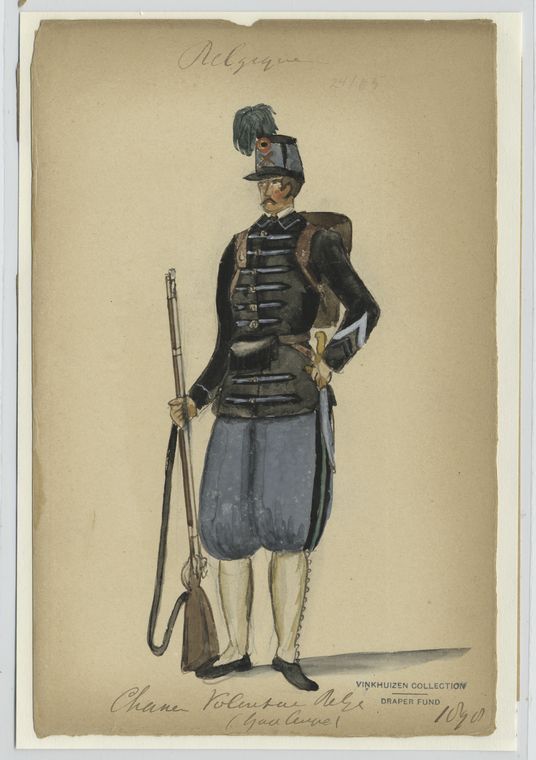 Otto von Bismarck convened a 14-nation conference (the Berlin Conference) to find a peaceful resolution to the Congo crisis. After three months of negotiation on 5 February 1885, the Berlin Conference reached agreement.
Otto von Bismarck convened a 14-nation conference (the Berlin Conference) to find a peaceful resolution to the Congo crisis. After three months of negotiation on 5 February 1885, the Berlin Conference reached agreement. While it did not formally approve or disapprove the territorial claims of the European powers in Central Africa, it did agree on a set of rules to ensure a conflict-free partitioning of the region. Key among those were the recognition of the Congo basin as a free-trade zone, and the general acceptance of the principle that any territorial claim needed to be backed up by evidence of actual and durable occupation of that territory.
While it did not formally approve or disapprove the territorial claims of the European powers in Central Africa, it did agree on a set of rules to ensure a conflict-free partitioning of the region. Key among those were the recognition of the Congo basin as a free-trade zone, and the general acceptance of the principle that any territorial claim needed to be backed up by evidence of actual and durable occupation of that territory.  In reality, Leopold II emerged triumphant from the Berlin Conference. In a series of bilateral diplomatic agreements,
In reality, Leopold II emerged triumphant from the Berlin Conference. In a series of bilateral diplomatic agreements,
Republic of the Congo and the Central African Republic), Portugal Leopold's wholly owned, single-shareholder "philanthropic" organization received the balance: 2,344,000 km2 (905,000 sq mi), to be constituted as the Congo Free
State.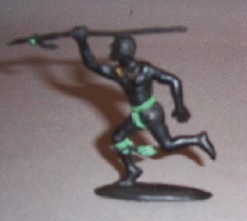
 Otto von Bismarck convened a 14-nation conference (the Berlin Conference) to find a peaceful resolution to the Congo crisis. After three months of negotiation on 5 February 1885, the Berlin Conference reached agreement.
Otto von Bismarck convened a 14-nation conference (the Berlin Conference) to find a peaceful resolution to the Congo crisis. After three months of negotiation on 5 February 1885, the Berlin Conference reached agreement. In reality, Leopold II emerged triumphant from the Berlin Conference. In a series of bilateral diplomatic agreements,
In reality, Leopold II emerged triumphant from the Berlin Conference. In a series of bilateral diplomatic agreements,Republic of the Congo and the Central African Republic), Portugal Leopold's wholly owned, single-shareholder "philanthropic" organization received the balance: 2,344,000 km2 (905,000 sq mi), to be constituted as the Congo Free
State.

The Congo Free State was a corporate state privately controlled by Leopold II, King of the Belgians through a dummy non-governmental organization,  the Association Internationale Africaine. Leopold was the sole shareholder and chairman. The state included the entire area of the present Democratic Republic of the Congo and existed
the Association Internationale Africaine. Leopold was the sole shareholder and chairman. The state included the entire area of the present Democratic Republic of the Congo and existed 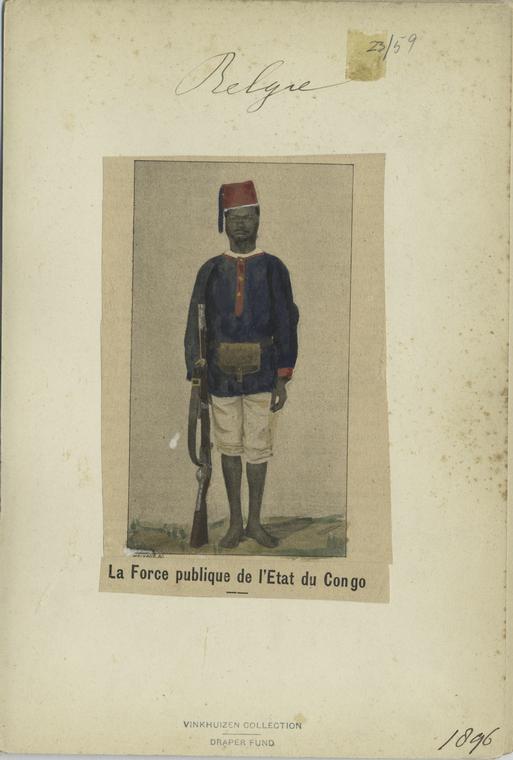 from 1885 to 1908, when it was annexed by the government of Belgium.
from 1885 to 1908, when it was annexed by the government of Belgium. fEwEWk~$(KGrHqJ,!hYE)7uboGpnBMopoF73u!~~_3.JPG) Initially, the occupation and exploration of the immense territory of the Congo Free State proved a heavy burden on the monarch's purse. Twice, state bankruptcy was avoided by the Belgian state granting Leopold II emergency loans. In the 1890s, the tide turned dramatically. Through the forced exploitation of rubber, copper, and other minerals in the upper Lualaba River
Initially, the occupation and exploration of the immense territory of the Congo Free State proved a heavy burden on the monarch's purse. Twice, state bankruptcy was avoided by the Belgian state granting Leopold II emergency loans. In the 1890s, the tide turned dramatically. Through the forced exploitation of rubber, copper, and other minerals in the upper Lualaba River basin, together with the global rubber boom, huge surpluses were generated. Leopold II used part of this new wealth for the embellishment of his native country: the Royal Galleries in Ostend,
basin, together with the global rubber boom, huge surpluses were generated. Leopold II used part of this new wealth for the embellishment of his native country: the Royal Galleries in Ostend, 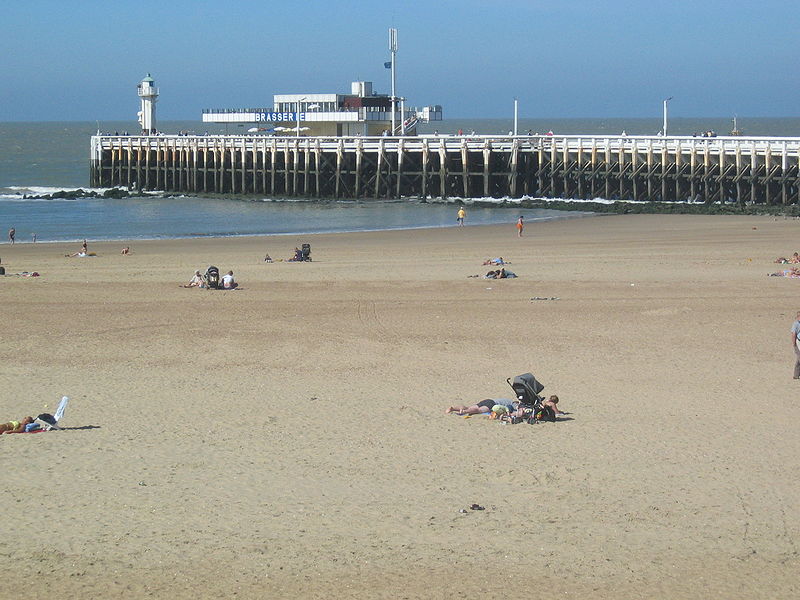 the Palace of the Colonies in Tervuren,
the Palace of the Colonies in Tervuren,  or the triumphal arch inBrussels were funded from the profits generated by the Congo. It soon became clear that these profits were generated on the back of brutal mistreatment of the local people and plunder of the Congo's natural resources.Thus, under Leopold II's administration, the Congo Free State became the site of one of the worst man-made humanitarian disasters of the turn of the 20th century. The report of the British Consul Roger Casement, published in early 1904, was an irrefutable indictment of the "rubber system": "..the drowsy, unsupervised machine of coercion which wore out the people and the land". In the absence of a census (the first was made in 1924), it is difficult to quantify the population loss of the period, but it must have been very high. According to Roger Casement's report, depopulation was caused mainly by four causes: "indiscriminate war", starvation, reduction of births, and tropical diseases. Adam Hochschild argues that roughly 10 million perished.The human suffering inflicted by the rapacious exploitation of the colony was immense.
or the triumphal arch inBrussels were funded from the profits generated by the Congo. It soon became clear that these profits were generated on the back of brutal mistreatment of the local people and plunder of the Congo's natural resources.Thus, under Leopold II's administration, the Congo Free State became the site of one of the worst man-made humanitarian disasters of the turn of the 20th century. The report of the British Consul Roger Casement, published in early 1904, was an irrefutable indictment of the "rubber system": "..the drowsy, unsupervised machine of coercion which wore out the people and the land". In the absence of a census (the first was made in 1924), it is difficult to quantify the population loss of the period, but it must have been very high. According to Roger Casement's report, depopulation was caused mainly by four causes: "indiscriminate war", starvation, reduction of births, and tropical diseases. Adam Hochschild argues that roughly 10 million perished.The human suffering inflicted by the rapacious exploitation of the colony was immense.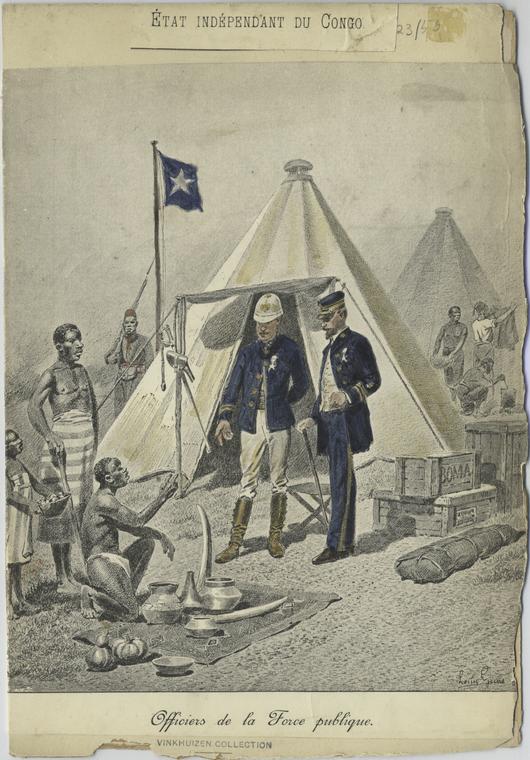
 from 1885 to 1908, when it was annexed by the government of Belgium.
from 1885 to 1908, when it was annexed by the government of Belgium.  basin, together with the global rubber boom, huge surpluses were generated. Leopold II used part of this new wealth for the embellishment of his native country: the Royal Galleries in Ostend,
basin, together with the global rubber boom, huge surpluses were generated. Leopold II used part of this new wealth for the embellishment of his native country: the Royal Galleries in Ostend,  the Palace of the Colonies in Tervuren,
the Palace of the Colonies in Tervuren,  or the triumphal arch inBrussels were funded from the profits generated by the Congo. It soon became clear that these profits were generated on the back of brutal mistreatment of the local people and plunder of the Congo's natural resources.Thus, under Leopold II's administration, the Congo Free State became the site of one of the worst man-made humanitarian disasters of the turn of the 20th century. The report of the British Consul Roger Casement, published in early 1904, was an irrefutable indictment of the "rubber system": "..the drowsy, unsupervised machine of coercion which wore out the people and the land". In the absence of a census (the first was made in 1924), it is difficult to quantify the population loss of the period, but it must have been very high. According to Roger Casement's report, depopulation was caused mainly by four causes: "indiscriminate war", starvation, reduction of births, and tropical diseases. Adam Hochschild argues that roughly 10 million perished.The human suffering inflicted by the rapacious exploitation of the colony was immense.
or the triumphal arch inBrussels were funded from the profits generated by the Congo. It soon became clear that these profits were generated on the back of brutal mistreatment of the local people and plunder of the Congo's natural resources.Thus, under Leopold II's administration, the Congo Free State became the site of one of the worst man-made humanitarian disasters of the turn of the 20th century. The report of the British Consul Roger Casement, published in early 1904, was an irrefutable indictment of the "rubber system": "..the drowsy, unsupervised machine of coercion which wore out the people and the land". In the absence of a census (the first was made in 1924), it is difficult to quantify the population loss of the period, but it must have been very high. According to Roger Casement's report, depopulation was caused mainly by four causes: "indiscriminate war", starvation, reduction of births, and tropical diseases. Adam Hochschild argues that roughly 10 million perished.The human suffering inflicted by the rapacious exploitation of the colony was immense.
The European and US press exposed the conditions in the Congo Free State to the public in the early 1900s. In 1904, Leopold II was forced to allow an international parliamentary commission of inquiry entry to the Congo Free State. The report of the commission (1905) confirmed most of the charges formulated by Edmund Morel  and Roger Casement, but also by Protestant and Catholic missionaries. By 1908, public pressure and diplomatic maneuvers led to the end of Leopold II's rule and to the annexation of the Congo as a colony of Belgium, known as the Belgian Congo.On 18 October 1908 Belgian Parliament voted in favor of annexing the Congo as a Belgian colony. This was only after
and Roger Casement, but also by Protestant and Catholic missionaries. By 1908, public pressure and diplomatic maneuvers led to the end of Leopold II's rule and to the annexation of the Congo as a colony of Belgium, known as the Belgian Congo.On 18 October 1908 Belgian Parliament voted in favor of annexing the Congo as a Belgian colony. This was only after 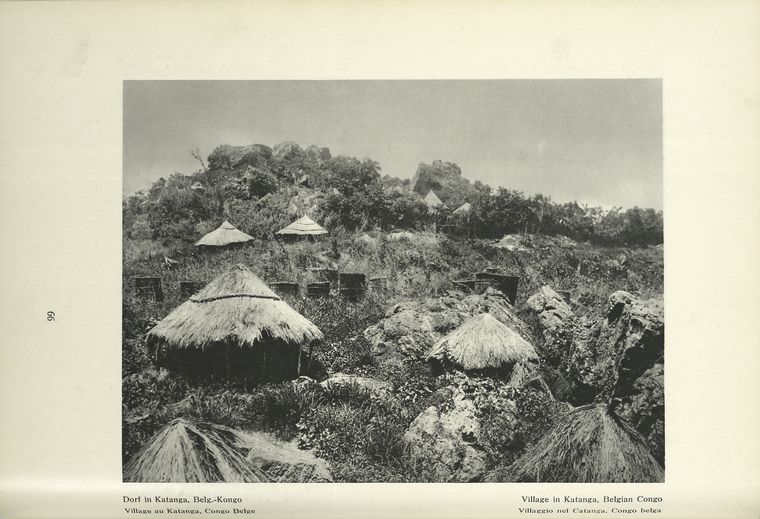 King Leopold II had finally given up any hope to maintain a substantial part of the Congo Free State as separate crown property. The government of the Belgian Congo was arranged by the 1908 Colonial Charter. Executive power rested with the Belgian Minister of Colonial Affairs, assisted by a Colonial Council (Conseil Colonial). Both resided in Brussels. The Belgian Parliament exercised legislative authority over the Belgian Congo. The highest-ranking representative of the colonial administration in the Congo was the Governor-general. From 1886 until 1926, the Governor-general and his administration were posted in Boma, near the Congo river estuary. From 1926 the colonial capital moved to Léopoldville, some 300 km further upstream in the interior. Initially, the Belgian Congo was administratively divided into four provinces: Léopoldville (or: Congo-Kasaï), Equateur, Orientale and Katanga, each presided by a vice-Governor-general. An administrative reform in 1932 increased the number of provinces to six, while "demoting" the vice-Governor-generals to provincial Governors.
King Leopold II had finally given up any hope to maintain a substantial part of the Congo Free State as separate crown property. The government of the Belgian Congo was arranged by the 1908 Colonial Charter. Executive power rested with the Belgian Minister of Colonial Affairs, assisted by a Colonial Council (Conseil Colonial). Both resided in Brussels. The Belgian Parliament exercised legislative authority over the Belgian Congo. The highest-ranking representative of the colonial administration in the Congo was the Governor-general. From 1886 until 1926, the Governor-general and his administration were posted in Boma, near the Congo river estuary. From 1926 the colonial capital moved to Léopoldville, some 300 km further upstream in the interior. Initially, the Belgian Congo was administratively divided into four provinces: Léopoldville (or: Congo-Kasaï), Equateur, Orientale and Katanga, each presided by a vice-Governor-general. An administrative reform in 1932 increased the number of provinces to six, while "demoting" the vice-Governor-generals to provincial Governors.
 and Roger Casement, but also by Protestant and Catholic missionaries. By 1908, public pressure and diplomatic maneuvers led to the end of Leopold II's rule and to the annexation of the Congo as a colony of Belgium, known as the Belgian Congo.On 18 October 1908 Belgian Parliament voted in favor of annexing the Congo as a Belgian colony. This was only after
and Roger Casement, but also by Protestant and Catholic missionaries. By 1908, public pressure and diplomatic maneuvers led to the end of Leopold II's rule and to the annexation of the Congo as a colony of Belgium, known as the Belgian Congo.On 18 October 1908 Belgian Parliament voted in favor of annexing the Congo as a Belgian colony. This was only after  King Leopold II had finally given up any hope to maintain a substantial part of the Congo Free State as separate crown property. The government of the Belgian Congo was arranged by the 1908 Colonial Charter. Executive power rested with the Belgian Minister of Colonial Affairs, assisted by a Colonial Council (Conseil Colonial). Both resided in Brussels. The Belgian Parliament exercised legislative authority over the Belgian Congo. The highest-ranking representative of the colonial administration in the Congo was the Governor-general. From 1886 until 1926, the Governor-general and his administration were posted in Boma, near the Congo river estuary. From 1926 the colonial capital moved to Léopoldville, some 300 km further upstream in the interior. Initially, the Belgian Congo was administratively divided into four provinces: Léopoldville (or: Congo-Kasaï), Equateur, Orientale and Katanga, each presided by a vice-Governor-general. An administrative reform in 1932 increased the number of provinces to six, while "demoting" the vice-Governor-generals to provincial Governors.
King Leopold II had finally given up any hope to maintain a substantial part of the Congo Free State as separate crown property. The government of the Belgian Congo was arranged by the 1908 Colonial Charter. Executive power rested with the Belgian Minister of Colonial Affairs, assisted by a Colonial Council (Conseil Colonial). Both resided in Brussels. The Belgian Parliament exercised legislative authority over the Belgian Congo. The highest-ranking representative of the colonial administration in the Congo was the Governor-general. From 1886 until 1926, the Governor-general and his administration were posted in Boma, near the Congo river estuary. From 1926 the colonial capital moved to Léopoldville, some 300 km further upstream in the interior. Initially, the Belgian Congo was administratively divided into four provinces: Léopoldville (or: Congo-Kasaï), Equateur, Orientale and Katanga, each presided by a vice-Governor-general. An administrative reform in 1932 increased the number of provinces to six, while "demoting" the vice-Governor-generals to provincial Governors.The territorial service was the true backbone of the colonial administration. Each province was divided into a number of districts (24 in all), and each district into territories (some 120 in all). A territory was managed by a territorial administrator, assisted by one or more assistants. The territories were further subdivided into numerous chiefdoms ("chefferies"), at the head of which the Belgian administration appointed "traditional chiefs" ("chefs coutumiers"). The territories administered by one territorial administrator and a handful of assistants were often larger than a few Belgian provinces taken together (the whole Belgian Congo was nearly 80 times larger than the whole of Belgium). Nevertheless, the territorial administrator was expected to inspect his territory and to file detailed annual reports with the provincial administration. In terms of jurisdiction, two systems co-existed: a system of European courts and one of indigenous courts ("tribunaux indigènes"). These indigenous courts were presided over by the traditional chiefs, but had only limited powers and remained under the firm control of the colonial administration. Public order in the colony was maintained by the "Force Publique", a locally recruited army under Belgian command. It was only in the 1950s that metropolitan troops—i.e. units of the regular Belgian army—were posted in the Belgian Congo (for instance in Kamina).

The colonial state—and in fact any authority exercised by whites in the Congo—was often referred to by the Congolese as "bula matari". Bula Matari, or "break rocks", was one of the names originally given to Stanley, because of the dynamite he used to crush rocks when paving his way through the lower-Congo region. The term Bula Matari came to signify the irresistible and compelling force of the colonial state.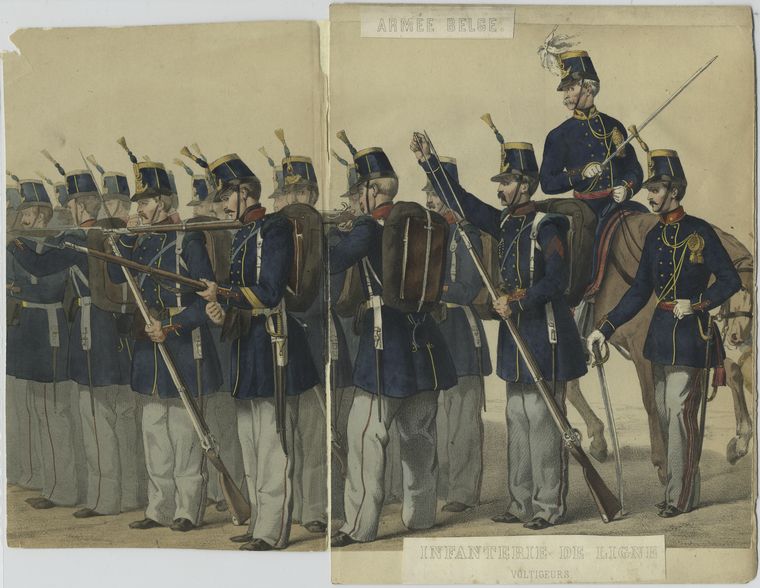

When the Belgian government took over the administration from King Leopold II in 1908, the situation in the Congo improved in certain respects. The brutal exploitation and arbitrary use of violence, in which some of the concessionary companies had excelled, were curbed. The tragedy of "red rubber" was put to a stop. Article 3 of the new Colonial Charter of 18 October 1908 established that: "Nobody can be forced to work on behalf of and for the profit of companies or privates". In reality, forced labour, in differing forms and degrees, would not disappear entirely until the end of the colonial period.

The transition from the Congo Free State to the Belgian Congo was a break, but it was also marked by a large degree of continuity. The last Governor-general of the Congo Free State, Baron Wahis, remained in office in the Belgian Congo, and the majority of Leopold II's administration with him.Opening up the Congo and its natural and mineral riches for the Belgian economy remained the main motive for colonial expansion, but all the same other priorities, such as healthcare and basic education, slowly gained in importance.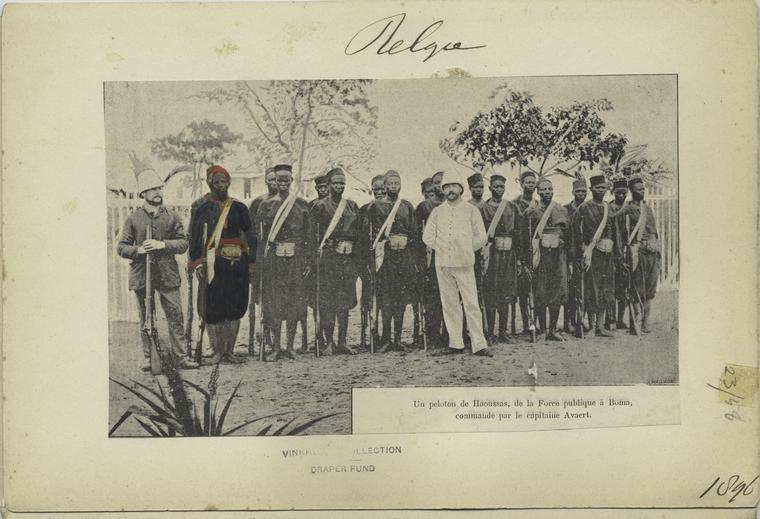

The Belgian Congo was directly involved in the two world wars. During WWI an initial stand-off between the Force Publique and the German colonial army in German East-Africa (Tanganyika) turned into open warfare with a joint Anglo-Belgian invasion of German colonial territory. The Force Publique gained a notable victory when it marched into Tabora in September 1916. After the war, Belgium was rewarded for the participation of the Force Publique in the East African campaign with a League of Nations mandate over the formerly German colony of Ruanda-Urundi. During WWII, the Belgian Congo was a crucial source of income for the Belgian government in exile in London. The Force Publique again participated in the Allied campaigns in Africa. The Congolese forces under the 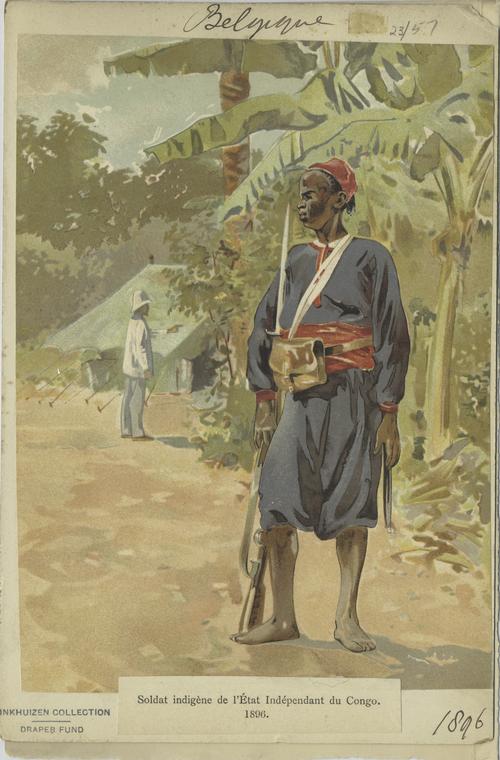 command of Belgian officers notably fought against the Italian colonial army in Ethiopia.The economic development of the Congo was the colonizer's top priority. Under Belgian rule two distinct periods of massive investment in the Congo's economic infrastructure stand out: the 1920s aThe mobilization of the African work force in the capitalist colonial economy played a crucial role in spreading the use of money in the Belgian Congo. The basic idea was that the development of the Congo had to be borne not by the Belgian taxpayers but by the Congolese themselves. The colonial state needed to be able to levy taxes in money on the Congolese, so it was important that they could earn money by selling their produce or their labour within the framework of the colonial economy.
command of Belgian officers notably fought against the Italian colonial army in Ethiopia.The economic development of the Congo was the colonizer's top priority. Under Belgian rule two distinct periods of massive investment in the Congo's economic infrastructure stand out: the 1920s aThe mobilization of the African work force in the capitalist colonial economy played a crucial role in spreading the use of money in the Belgian Congo. The basic idea was that the development of the Congo had to be borne not by the Belgian taxpayers but by the Congolese themselves. The colonial state needed to be able to levy taxes in money on the Congolese, so it was important that they could earn money by selling their produce or their labour within the framework of the colonial economy. After WWI, priority was given to mining (copper and cobalt in Katanga, diamond in Kasai, gold in Ituri) as well as to the transport infrastructure (rail lines Matadi-Léopoldville and Elisabethville-Port Francqui). To obtain the necessary capital, the colonial state gave the private companies to a large extent a free hand. This allowed in particular the Belgian Société Générale to build up an economic empire in the colony. Huge profits were generated and for a large part siphoned off to Europe in the form of dividends The necessary work force was recruited in the interior of the vast colony with the active support of the territorial administration. In many cases this amounted to forced labour, as in many villages minimum quota of "able-bodied workers" to be recruited were enforced. In this way, tens of thousands of workers were transferred from the interior to the sparsely populated copper belt in the South (Katanga) to work in the mines. In agriculture too, the colonial state forced a drastic rationalisation of production. The so-called "vacant lands"—i.e. the land that was not directly used by the local tribes—fell to the state, who redistributed it to European companies, individual white landowners (colons) or the missions. This way an extensive plantation economy developed. Palm oil production in the Congo increased from 2,500 tons in 1914 to 9,000 tons in 1921 and 230,000 tons in 1957. Cottonproduction increased from 23,000 tons in 1932 to 127,000 in 1939. After WWI the system of mandatory cultivation was introduced: Congolese peasants were forced to grow certain cash crops (cotton, coffee, groundnuts) destined for the European market. Territorial administrators and state agronomists had the task to supervise and if necessary sanction those peasants who evaded the hated mandatory cultivation.
After WWI, priority was given to mining (copper and cobalt in Katanga, diamond in Kasai, gold in Ituri) as well as to the transport infrastructure (rail lines Matadi-Léopoldville and Elisabethville-Port Francqui). To obtain the necessary capital, the colonial state gave the private companies to a large extent a free hand. This allowed in particular the Belgian Société Générale to build up an economic empire in the colony. Huge profits were generated and for a large part siphoned off to Europe in the form of dividends The necessary work force was recruited in the interior of the vast colony with the active support of the territorial administration. In many cases this amounted to forced labour, as in many villages minimum quota of "able-bodied workers" to be recruited were enforced. In this way, tens of thousands of workers were transferred from the interior to the sparsely populated copper belt in the South (Katanga) to work in the mines. In agriculture too, the colonial state forced a drastic rationalisation of production. The so-called "vacant lands"—i.e. the land that was not directly used by the local tribes—fell to the state, who redistributed it to European companies, individual white landowners (colons) or the missions. This way an extensive plantation economy developed. Palm oil production in the Congo increased from 2,500 tons in 1914 to 9,000 tons in 1921 and 230,000 tons in 1957. Cottonproduction increased from 23,000 tons in 1932 to 127,000 in 1939. After WWI the system of mandatory cultivation was introduced: Congolese peasants were forced to grow certain cash crops (cotton, coffee, groundnuts) destined for the European market. Territorial administrators and state agronomists had the task to supervise and if necessary sanction those peasants who evaded the hated mandatory cultivation.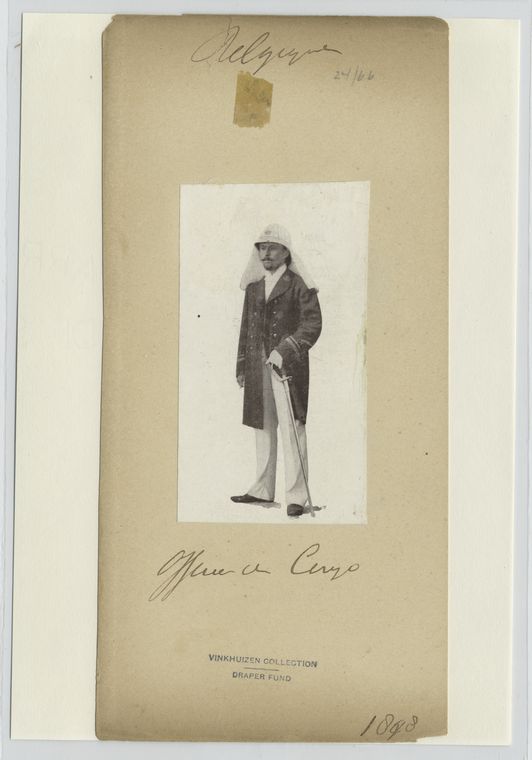
 command of Belgian officers notably fought against the Italian colonial army in Ethiopia.The economic development of the Congo was the colonizer's top priority. Under Belgian rule two distinct periods of massive investment in the Congo's economic infrastructure stand out: the 1920s aThe mobilization of the African work force in the capitalist colonial economy played a crucial role in spreading the use of money in the Belgian Congo. The basic idea was that the development of the Congo had to be borne not by the Belgian taxpayers but by the Congolese themselves. The colonial state needed to be able to levy taxes in money on the Congolese, so it was important that they could earn money by selling their produce or their labour within the framework of the colonial economy.
command of Belgian officers notably fought against the Italian colonial army in Ethiopia.The economic development of the Congo was the colonizer's top priority. Under Belgian rule two distinct periods of massive investment in the Congo's economic infrastructure stand out: the 1920s aThe mobilization of the African work force in the capitalist colonial economy played a crucial role in spreading the use of money in the Belgian Congo. The basic idea was that the development of the Congo had to be borne not by the Belgian taxpayers but by the Congolese themselves. The colonial state needed to be able to levy taxes in money on the Congolese, so it was important that they could earn money by selling their produce or their labour within the framework of the colonial economy. After WWI, priority was given to mining (copper and cobalt in Katanga, diamond in Kasai, gold in Ituri) as well as to the transport infrastructure (rail lines Matadi-Léopoldville and Elisabethville-Port Francqui). To obtain the necessary capital, the colonial state gave the private companies to a large extent a free hand. This allowed in particular the Belgian Société Générale to build up an economic empire in the colony. Huge profits were generated and for a large part siphoned off to Europe in the form of dividends The necessary work force was recruited in the interior of the vast colony with the active support of the territorial administration. In many cases this amounted to forced labour, as in many villages minimum quota of "able-bodied workers" to be recruited were enforced. In this way, tens of thousands of workers were transferred from the interior to the sparsely populated copper belt in the South (Katanga) to work in the mines. In agriculture too, the colonial state forced a drastic rationalisation of production. The so-called "vacant lands"—i.e. the land that was not directly used by the local tribes—fell to the state, who redistributed it to European companies, individual white landowners (colons) or the missions. This way an extensive plantation economy developed. Palm oil production in the Congo increased from 2,500 tons in 1914 to 9,000 tons in 1921 and 230,000 tons in 1957. Cottonproduction increased from 23,000 tons in 1932 to 127,000 in 1939. After WWI the system of mandatory cultivation was introduced: Congolese peasants were forced to grow certain cash crops (cotton, coffee, groundnuts) destined for the European market. Territorial administrators and state agronomists had the task to supervise and if necessary sanction those peasants who evaded the hated mandatory cultivation.
After WWI, priority was given to mining (copper and cobalt in Katanga, diamond in Kasai, gold in Ituri) as well as to the transport infrastructure (rail lines Matadi-Léopoldville and Elisabethville-Port Francqui). To obtain the necessary capital, the colonial state gave the private companies to a large extent a free hand. This allowed in particular the Belgian Société Générale to build up an economic empire in the colony. Huge profits were generated and for a large part siphoned off to Europe in the form of dividends The necessary work force was recruited in the interior of the vast colony with the active support of the territorial administration. In many cases this amounted to forced labour, as in many villages minimum quota of "able-bodied workers" to be recruited were enforced. In this way, tens of thousands of workers were transferred from the interior to the sparsely populated copper belt in the South (Katanga) to work in the mines. In agriculture too, the colonial state forced a drastic rationalisation of production. The so-called "vacant lands"—i.e. the land that was not directly used by the local tribes—fell to the state, who redistributed it to European companies, individual white landowners (colons) or the missions. This way an extensive plantation economy developed. Palm oil production in the Congo increased from 2,500 tons in 1914 to 9,000 tons in 1921 and 230,000 tons in 1957. Cottonproduction increased from 23,000 tons in 1932 to 127,000 in 1939. After WWI the system of mandatory cultivation was introduced: Congolese peasants were forced to grow certain cash crops (cotton, coffee, groundnuts) destined for the European market. Territorial administrators and state agronomists had the task to supervise and if necessary sanction those peasants who evaded the hated mandatory cultivation.
After the occupation of Belgium by the Germans in May 1940, the Congo declared itself loyal to the Belgian government in exile in London to continue the war on the Allied side. During WWII, production increased drastically. After Malaysia fell to the Japanese, the Belgian Congo became a strategic supplier of rubber to the Allies. The Belgian Congo was one of the major exporters of uranium to the US during WWII (and the Cold War), particularly from the Shinkolobwe mine. The colony provided the uranium used in the atom bombs dropped on Hiroshima and Nagasaki in 1945.The economic boom of the 1920s turned the Belgian Congo into one of the leading copper ore producers worldwide. In 1926 alone, the Union Miniére du Haut Katanga exported more than 80,000 tons of copper ore, a large part of which was processed in Hoboken in Belgium. In 1928, King Albert I visited the Congo to inaugurate the so-called 'voie national' that linked the Katanga mining region via rail (up to Port Francqui) and river transport (from Port Francqui to Léopoldville) to the Atlantic port of Matadi. During the great depression of the 1930s, the export-based Belgian Congo economy was severely hit by the world crisis, because of the drop of international demand of raw materials and agricultural products (for example, the price of peanuts fell from 1.25 francs to 25 cents). In some areas, as in the Katanga mining region, employment declined 70% and in the whole country the exploitation of forced labour was diminished while many forced labourers returned to their villages.

After WWII, the colonial state took on a much more active role in the economic and social development of the Belgian Congo. An ambitious ten-year plan was launched in 1949. It put a lot of emphasis on house building, energy supply and health care infrastructure. The ten-year plan ushered in a decade of strong economic growth, from which, for the first time, the Congolese began to benefit on a substantial scale. In 1953, the Congolese were granted the right to buy and sell private property in their own name. In the 1950s, a Congolese middle class, modest at first, but steadily growing, emerged in the main cities (Léopoldville,Elisabethville, Stanleyville, Luluabourg).
No comments:
Post a Comment